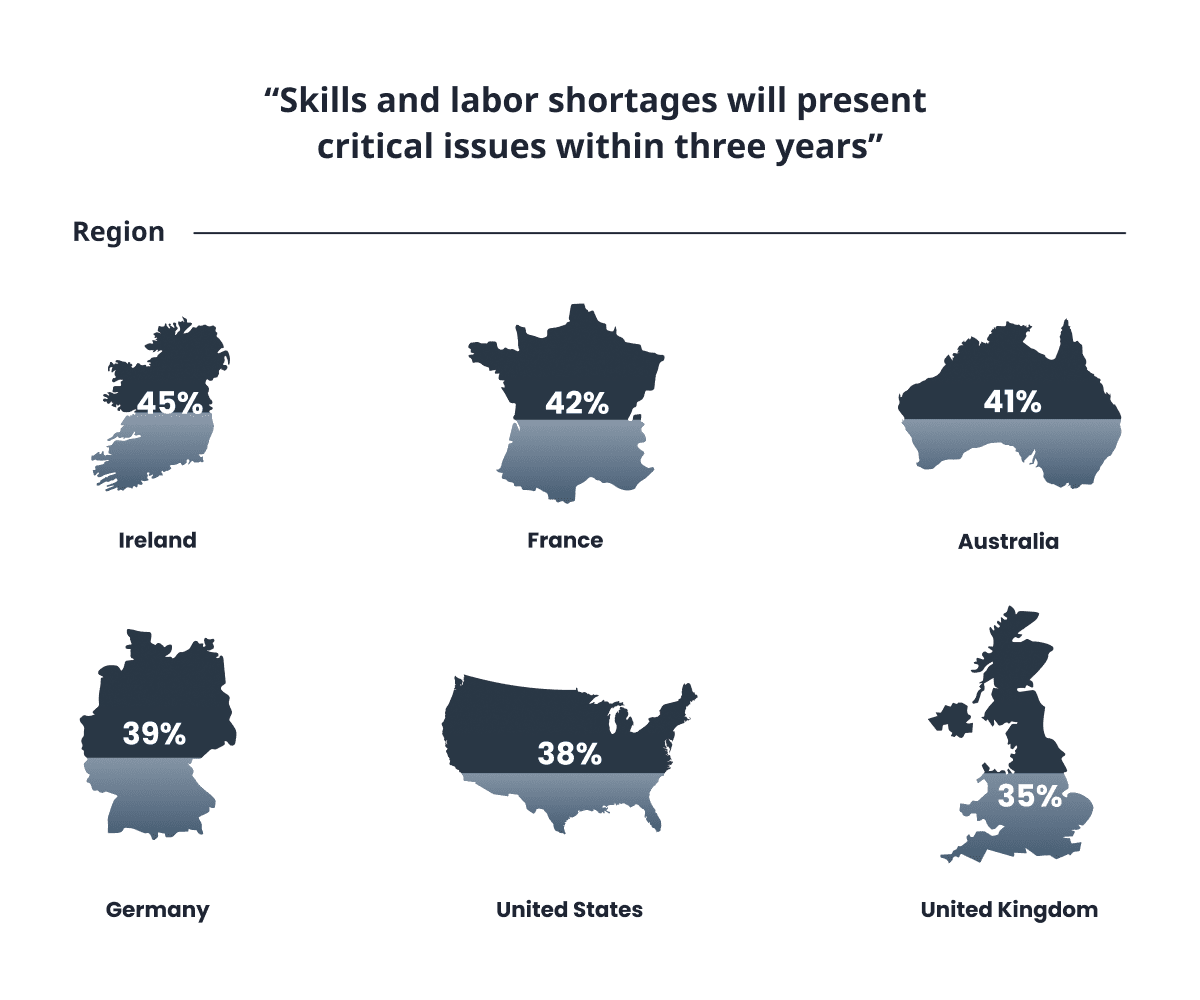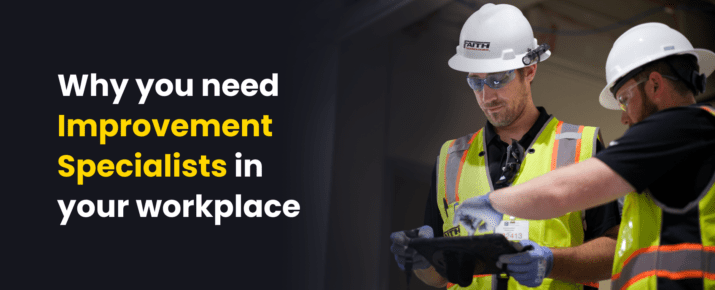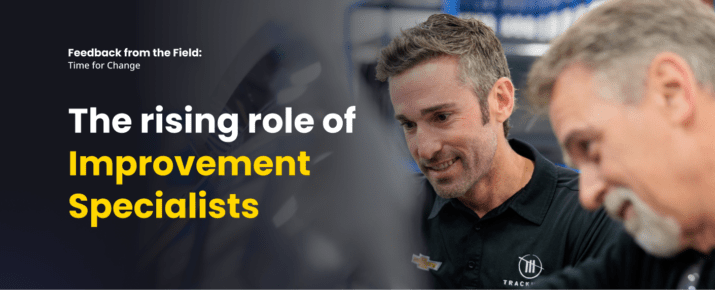Preventing brain drain: 5 ways to retain skills and knowledge in your team
Feedback From The Field | World Of Work | By | 19 Nov 2024 | 7 minute read

With talent shortages on the rise, brain drain has become a hot topic.
When skilled employees move on, particularly long-time or experienced staff, they often take critical knowledge and skills with them. This leaves gaps in the workforce that can slow down projects and impact productivity.
If you don’t have effective processes in place for capturing and sharing insights, important knowledge can get lost. Businesses should embed smart, practical ways to capture and keep that knowledge in the team, especially to soften the blow of workers changing teams or leaving companies altogether.
So, what can you do to avoid a brain drain and improve knowledge handover within your organization, and industry? Read on to see how to create a culture where knowledge flows freely, and skills are shared. You might discover a new way to help upskill colleagues and make knowledge capture easy to maintain.
What is brain drain?
When we refer to a “brain drain” we mean losing essential knowledge, skills, and experience when team members move on.
According to our recent Feedback from the Field report, 57% of workers believe there will be a brain drain in their industry. This concern is highest in Australia (62%) and in the energy (67%), construction (61%), and manufacturing (60%) industries, where hands-on skills and practical know-how are essential.
How does a brain drain impact skills shortages?
When older, experienced workers retire, they take their valuable skills with them. A generational gap could also be adding to the challenge, with a quarter (25%) of workers who believe younger or less experienced colleagues aren’t open to learning. With younger generations showing less incentive and interest in entering critical industries, the pipeline of new workers to fill frontline roles is drying up, and the frontline is already bearing the brunt of it.
In fact, seven in ten workers (71%) believe skills and labor shortages will become critical issues in their industry. Of these, 39% anticipate these shortages will occur within just three years. There needs to be clearer, more engaging ways to transfer knowledge and engage young workers in the process.

The effects of brain drain
The impacts of brain drain are felt at all levels of a company. When experienced workers leave, projects may slow down, newer team members struggle to adapt, and vital knowledge is often left undocumented, sometimes buried in lengthy reports or large PDFs that would be more useful if split into smaller, separate pages in a PDF for easier access and reference.
In specialized industries, even one person leaving can have a huge effect. Creating new ways to pass on knowledge and circulate it effectively in the company helps everyone upskill. Doing so might help engage workers by improving their capability and confidence within their roles.
A knowledge-sharing report card
Asking frontline workers about what they’re experiencing is the best way to understand what’s happening. Our recent Feedback from the Field research revealed where the opportunities are:
- 54% of workers think knowledge sharing within their organization is ineffective. Concerns are highest in Australia (62%) and the energy sector (61%), where fears of a brain drain are even greater.
- 32% say that knowledge is passed on inefficiently in their organization, whether in documentation or verbally.
- 26% say knowledge is not typically captured when colleagues leave the organization or move roles.
These problems are more visible in large organizations (1,000+ employees), where 37% of workers say there is inefficient knowledge sharing, and 32% said they fail to capture it before it’s too late when colleagues move on.
It doesn’t have to be this way. By investing in knowledge-sharing strategies, businesses can retain expertise and empower employees to perform at their best.
Five ways to beat brain drain
1. Build a culture of knowledge-sharing
The most impactful knowledge and skills already live within the walls of an organisation. How is knowledge and skills sharing embedded into your team’s DNA? It’s never too late to get started. When employees see knowledge sharing as a core part of their role, they’re more likely to exchange ideas, document processes, and support each other. Simple steps like celebrating team contributions and offering incentives for knowledge-sharing efforts can strengthen this culture.
Leaders can also set the tone by modeling open communication and encouraging teams to impart knowledge and insights. For example, when Sodexo uses SafetyCulture’s Heads Up feature to bring workers up to speed with important information, everyone is expected to acknowledge they understand what’s beig communicated. “If the President acknowledges these messages, it sets the standard for everyone else,” says Sarah Porter, Vice President, Corporate Services Operational Excellence at Sodexo.
2. Establish mentorship and buddy programs
Mentorship programs are a powerful way to pass on skills and know-how. Setting up buddy systems where experienced employees work directly with newer team members helps hands-on knowledge stick, strengthening connections across the team.
Donaldson Group, a longstanding player in the UK construction industry, took a unique approach to mentorship by identifying natural peer leaders within teams—people that other employees naturally turned to for guidance.
These peer-led mentoring efforts helped Donaldson build skills across the team and successfully roll out digital audits, embedding knowledge-sharing as a team norm. Regular check-ins ensure that knowledge transfer happens naturally, minimizing the risk of knowledge loss over time.
3. Use digital tools for real-time knowledge capture
Digital platforms make it easier to document and share information, even if they’re on the go, creating a practical way for teams to retain important knowledge. Mobile-friendly tools allow employees to update checklists, share procedures, record webinars, and store insights in real-time, making them accessible to everyone. The right platform also prevents valuable know-how from getting buried across drives and emails by creating a single source of truth for research, SOPs, and lessons learned. With Stravito knowledge management software, teams can centralize insights and make them easily discoverable, helping new hires and veterans alike find answers fast and keep work moving.
US-based Tremco implemented a Daily Task Analysis that every worker on every roof must complete before starting their job. This mini-hazard assessment shows workers that their feedback is valued and gives managers better visibility of what their workers need. It also empowers those who know the job best to share their insights, helping workers perform at their best and improve their skills on each job.
Workers in frontline industries need quick access to critical information, and digital tools like SafetyCulture can ensure that essential knowledge is captured and ready to go when it’s needed.
AI-powered platforms can take this even further by making knowledge capture smarter and faster. Tools like Qualified, one of the top AI sales solutions, allow teams to engage prospects in real time while automatically sharing those insights across marketing and sales. This helps prevent knowledge gaps, improves collaboration, and ensures valuable customer information flows through the organization instead of getting lost after each interaction.
4. Strengthen offboarding processes
Effective offboarding is essential for preserving knowledge. When employees move on, having a set process to capture their insights is invaluable.
Structured offboarding processes can capture the nuances of a role and provide incoming team members with a solid knowledge base, reducing the learning curve and minimizing disruption.
Operating in the highly regulated oil and gas industry, ClearWell Dynamics actively captures knowledge before it’s lost. They use SafetyCulture’s Inspections and Issues features to record safety and operational insights gathered on the job. By standardizing these checklists and reports, they ensure that current and future employees can access every safety observations and equipment inspection logs, so that they’re easy to reference in the future, and transfer to other job owners.
“Using the SafetyCulture platform has completely transformed the way we do business. We aren’t pulling out manilla folders or spending time tracking down the right paper—everything is right at our fingertips,” says Jonathan Howell, Assistant Safety Director. The ability to quickly reference past checklists and incidents gives new team members the context and guidance they need to hit the ground running.
5. Invest in continuous training programs
When was the last time you evaluated whether your training programs are well understood and whether workers have embedded that knowledge into their daily routines? Are there roadblocks preventing effective training and upskilling? Employees at all levels need opportunities to learn from one another. Easy-to-use, updatable training platforms can help ensure expertise is consistently shared across the team. For organizations looking to offer technical upskilling as part of their training efforts, incorporating structured digital learning can be a game-changer. Many teams are turning to platforms like DataCamp to develop critical skills such as data analysis and programming in Python. Online Python courses provide accessible, flexible options for all experience levels, making it easier for businesses to ensure team members stay current with essential technology competencies.
For teams in construction, energy, and manufacturing, partnering with local vocational providers can reinforce continuous training and speed up onboarding. In Northeast Florida, a trade school in Jacksonville offers hands-on programs in welding, HVAC/refrigeration, electrical applications, and lineworker training, with flexible schedules suited to shift-based work. Aligning internal SOPs and mentorship with these accredited programs can create a steady pipeline of skilled technicians and help preserve practical know-how as senior workers retire.
For example, Thermosash (Woods Glass) employs a diverse workforce comprising 17 nationalities, making it hard to deliver training that will be deeply understood. Before implementing SafetyCulture, addressing the language barrier was a challenge. Now, they use the Training and AI translation tool to regularly deliver engaging training courses in each employee’s native language. It’s helped them tap into more diverse skills, but also increased understanding, knowledge retention, and quality of work.
Protecting knowledge for long-term success
Actively storing and circulating company knowledge creates a culture where every team member’s insights and expertise are valued. By building mentorship programs, using digital tools, and strengthening knowledge-sharing practices, businesses can empower employees to learn from one another. When knowledge flows freely, teams are set up for long-term success. Embrace these strategies, and you’ll be one step closer to building a resilient, forward-thinking team ready to tackle the future confidently.
About the research
Feedback from the Field is an annual report that aims to give businesses deeper insights into their workforce and help uncover opportunities for operational improvement. All figures, unless otherwise stated, are from YouGov. The total sample size was 10,121 adults (2023 UK, 2087 US, 2010 Australia, 2003 Germany, 1504 France, 501 Ireland). Fieldwork was undertaken from July to August 2024. The survey was carried out online.
Read more Feedback from the Field articles
- How to build better workplace relationships
- Upskilling frontline workers – here’s how to do it right
- Speaking up and taking action: How to empower frontline workers
Important Notice
The information contained in this article is general in nature and you should consider whether the information is appropriate to your specific needs. Legal and other matters referred to in this article are based on our interpretation of laws existing at the time and should not be relied on in place of professional advice. We are not responsible for the content of any site owned by a third party that may be linked to this article. SafetyCulture disclaims all liability (except for any liability which by law cannot be excluded) for any error, inaccuracy, or omission from the information contained in this article, any site linked to this article, and any loss or damage suffered by any person directly or indirectly through relying on this information.





